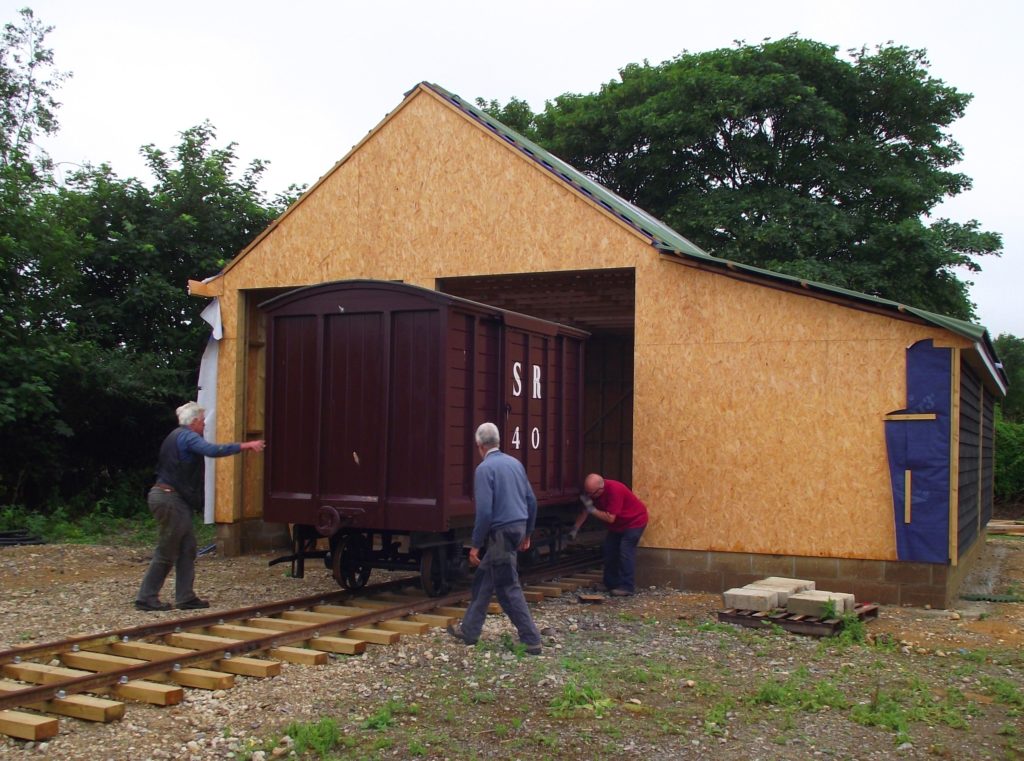Events are moving fast at our Southwold site. Clarkes of Walsham https://www.clarkesofwalsham.co.uk/ delivered timber, membrane, and insulation for the walls and floor of the workshop and main shed: having enjoyed such a long spell of settled weather, we were caught out by the (otherwise very welcome) rainstorm on 27th – so we ran it all into the building the next day to stop it being spoiled. I guess doing it the previous day would have been more organised, really. Still, the timber is tanalised, and the floorboards are sterling, so it’s relatively weather-proof.
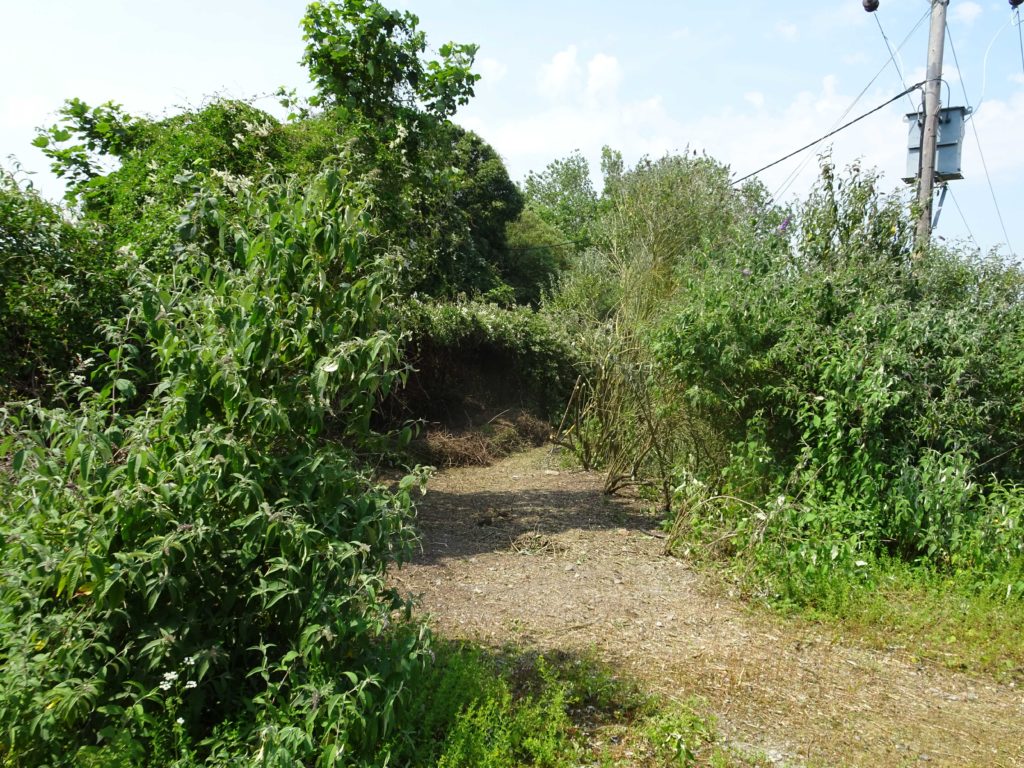
The plumbing in the new office/shop is pretty well complete, thanks to John and Chris: the new (temporary) shop has been painted by Stewart, while John Bennett has been supervising the dismantling of the current shop and moving the contents into what will become the new one. The SRT shop at 27 High Street will close on June 30th, with its replacement – hopefully – opening mid-July at Blyth Road.
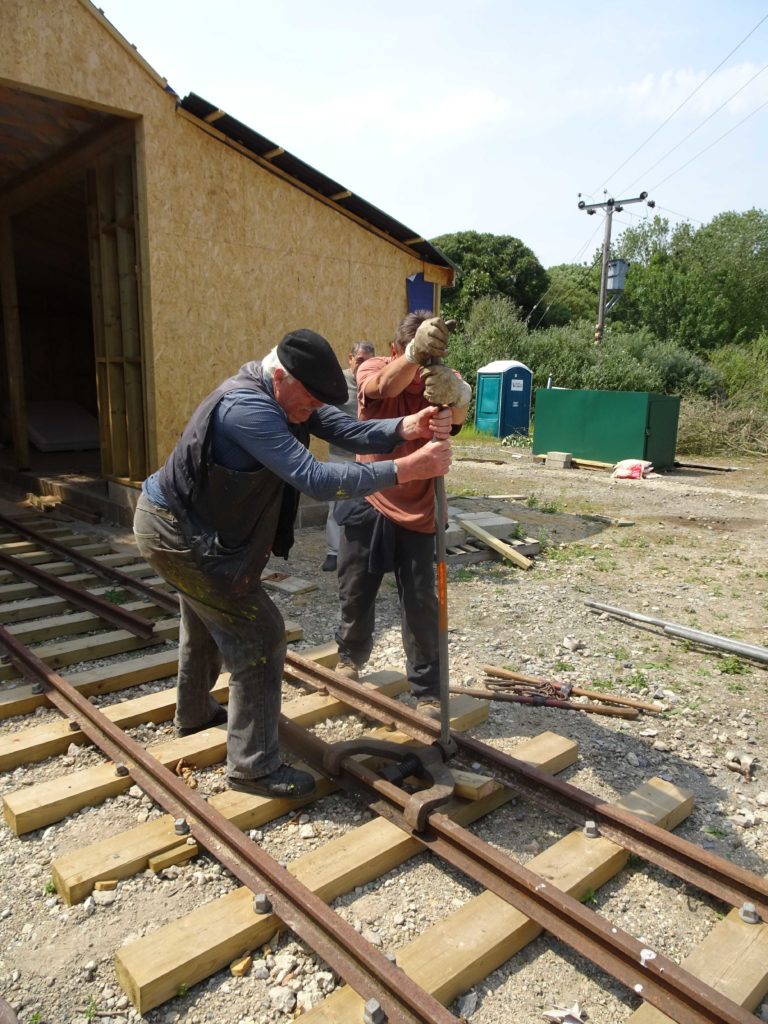
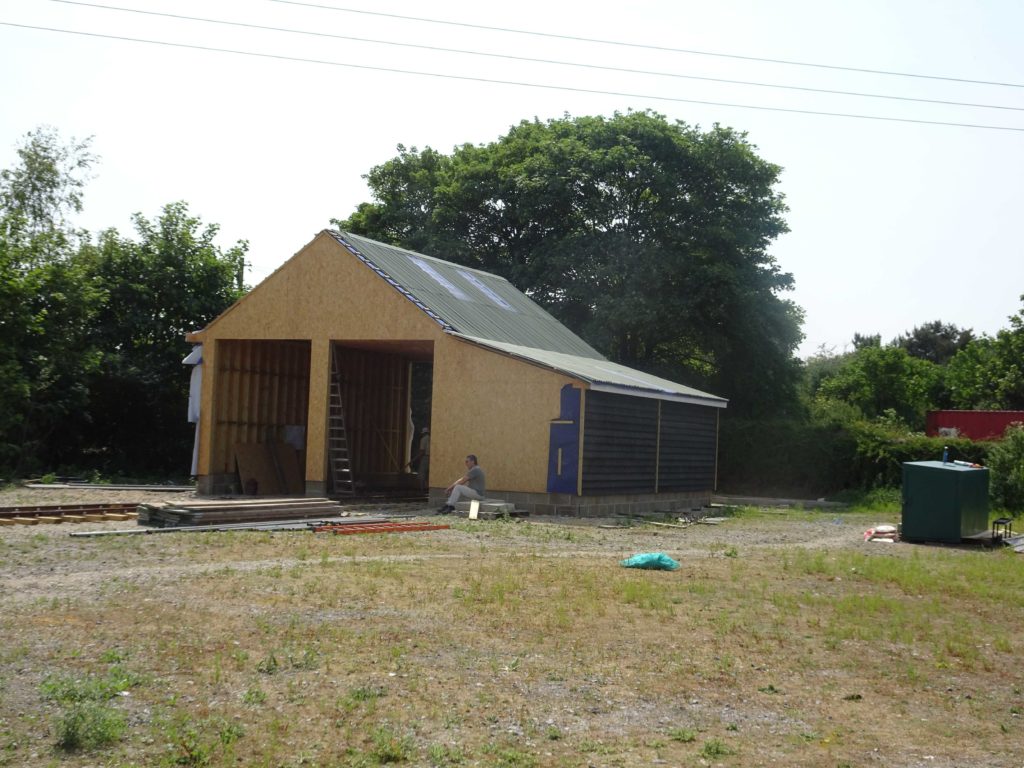
The miniature railway – “Blyth Valley Light Railway” – attended a wedding at the weekend, and has now finished its travels: it will now become a permanent feature of “SteamWorks”. The site has quite a slope on it, and 7¼” railways do not take kindly to gradients, so we’ll have lots of enjoyable railway civil engineering to complete. It’s surprising how much fill you need for an embankment 750mm high, with a nice flat top for passenger safety, and gently-sloping sides to be grassed. The Miniature Railway Supply Company http://www.miniaturerailwaysupply.com/, our track supplier, are providing ready-curved rails, which’ll take a lot of the guesswork out of keeping to our ruling 11m radius (and yes, we know that’s tight – but it’s the biggest we can fit into the site).
Meanwhile, the first complete item of SR Heritage Train rolling stock – Van 40 – arrived onsite on Wednesday from S.O.L.D. of Lowestoft, who have built the body on our ex-Royal Naval underframe. They have done a very nice job indeed.
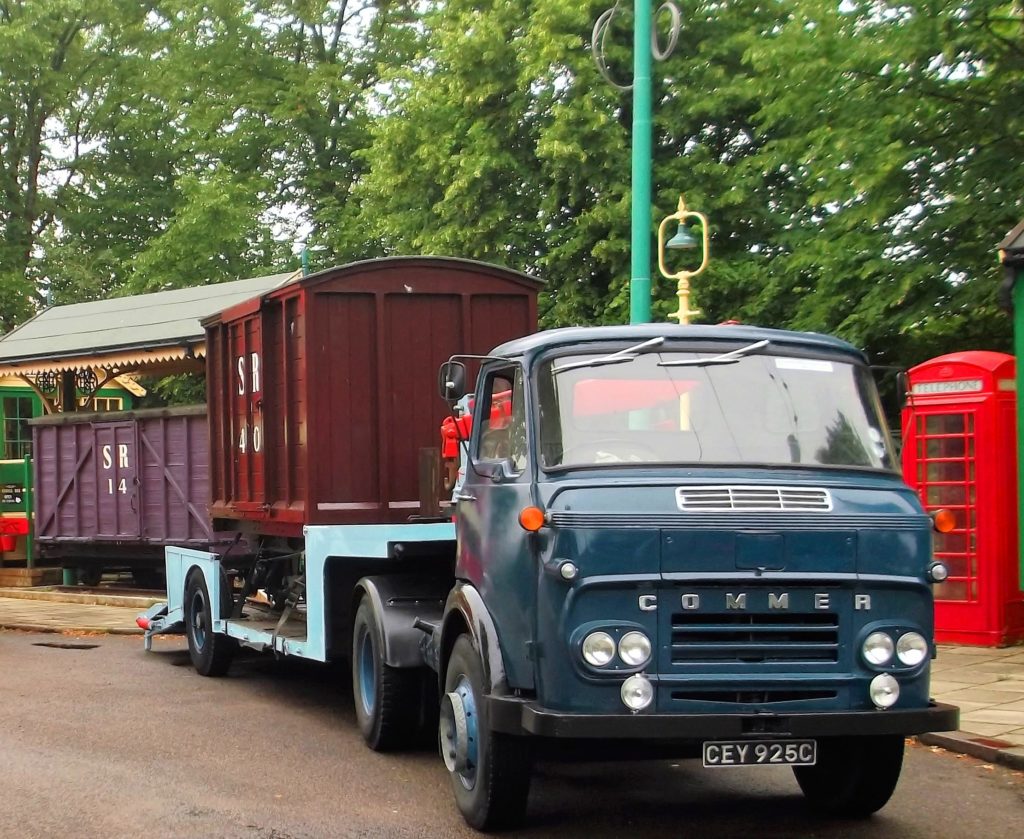
Neal and Nigel, our friends from Norfolk who own a classic Commer low-loader, kindly took the van to the East Anglia Transport Museum on its way to Southwold, so it could be photographed close to the original SR van that is there: this showed an interesting contrast between the replica van in as-built configuration, 10 feet long, and the EATM’s rebuilt body, at over 13 feet. The beautiful lettering and numbering on both wagons was done by the EATM’s Bernie W, and sets off the body colour very well indeed. The van was downloaded onto the three-foot track at Blyth Road, thus being the first piece of SR rolling stock to go onto permanent SR track (the volunteers found it hard to resist rolling it up and down the 40 yards we currently have – in fact, they didn’t even try to resist it (a heavy van like this is ideal for de-rusting the rails).
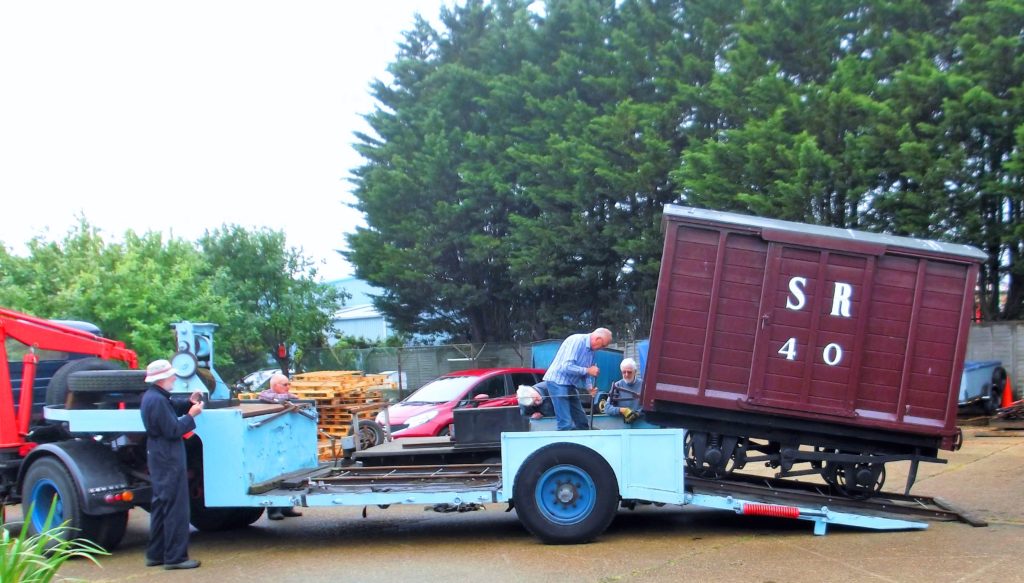
This van is radically different in colour from the No 13 body at Wenhaston: since we painted that, we have done more research, and concluded that the SR probably used GER coach crimson lake, as the two vans were considered to be coaching stock (even though numbered within the wagon stock!).
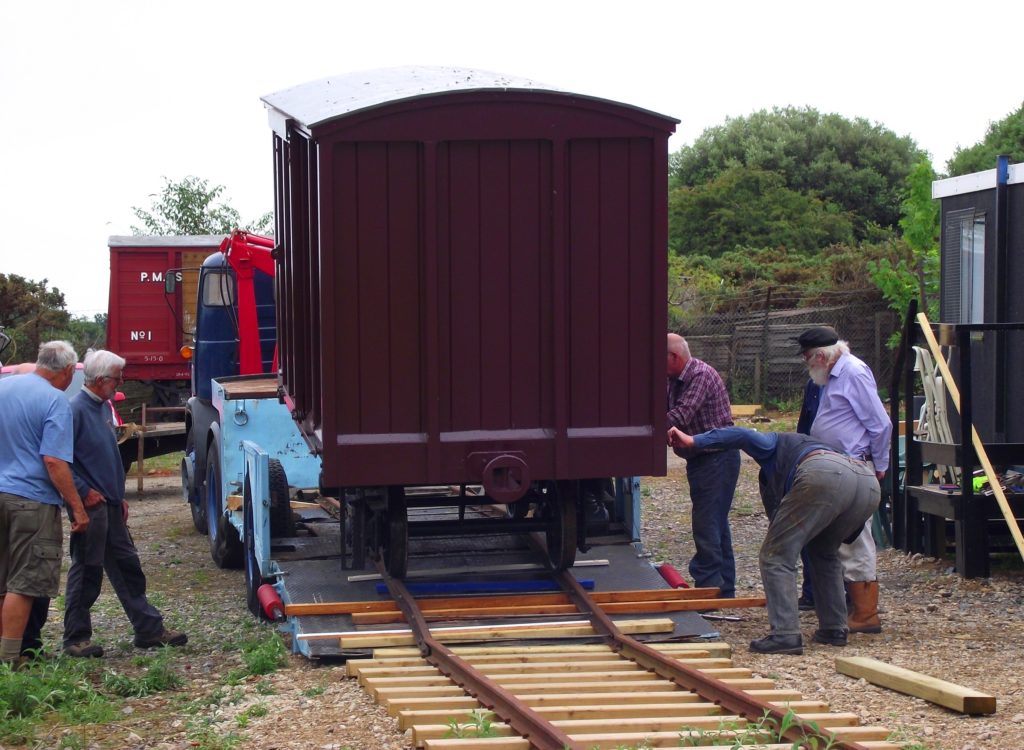
This is also the colour used by the Middy on their coaches, so it’s appropriate, as the two lines were at one stage to be joined, with the SR being re-gauged although in the end, only the Harbour Line weighbridge and the Halesworth Folly loco shed were provided with SG
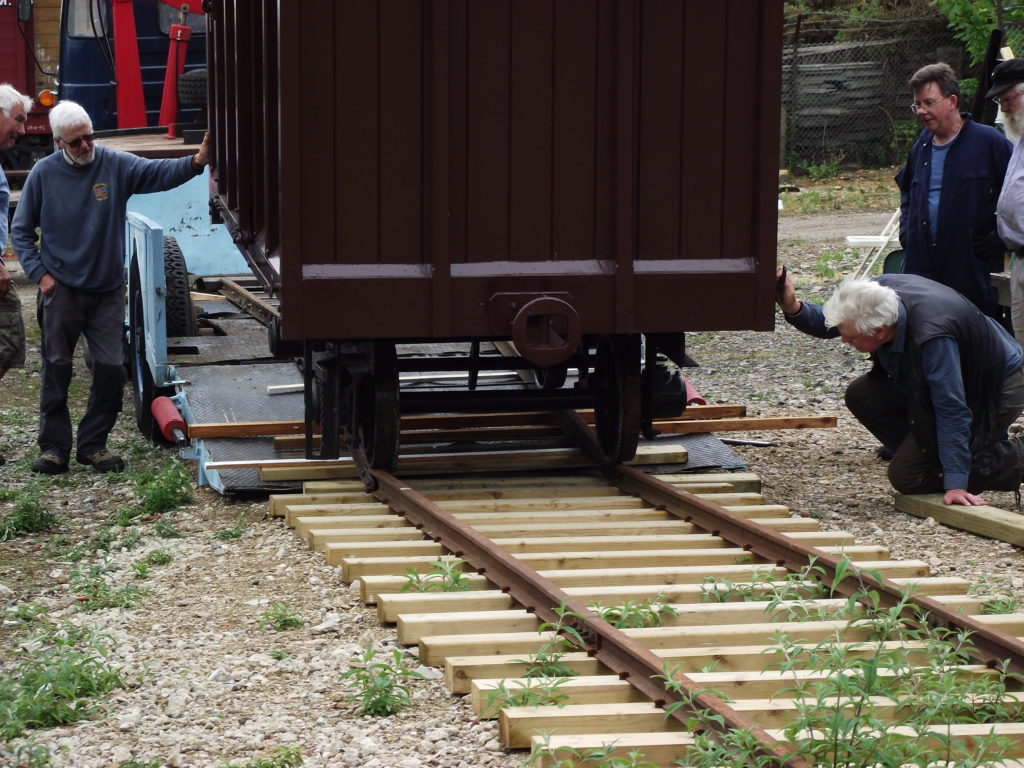
track – and there’s some doubt whether the loco shed was dual-tracked, even thought there was provision for it.
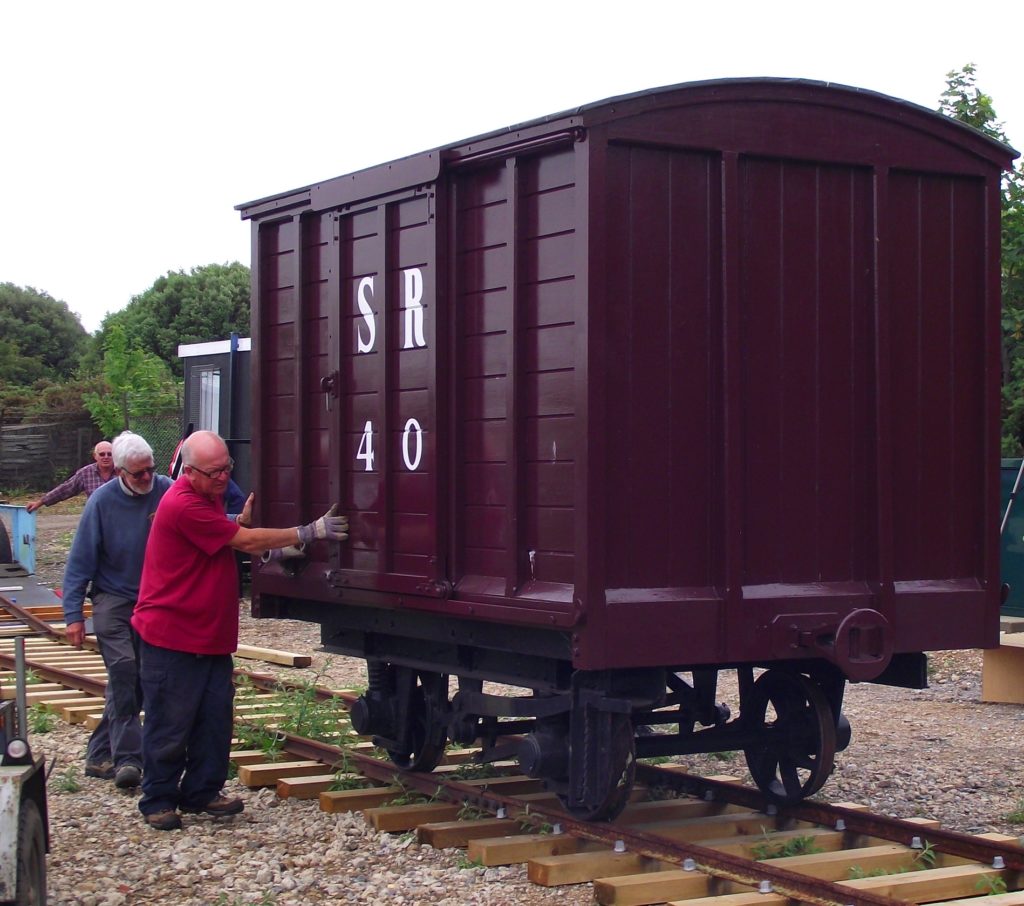
The list of necessary jobs to make SteamWorks a reality gets longer all the time: more volunteers (particularly on Saturdays) would make it a reality in a shorter time. We also need a great deal more cash (because even using volunteers, materials have to be paid for), so we plead with any enthusiasts out there to please sponsor the Trust by a Bond, or by a donation of any size. You can be sure that none of it will be wasted: no Trust official takes any expenses at all, and each job is done with maximum input from volunteers and well-wishers, with help from many local sponsoring firms.
